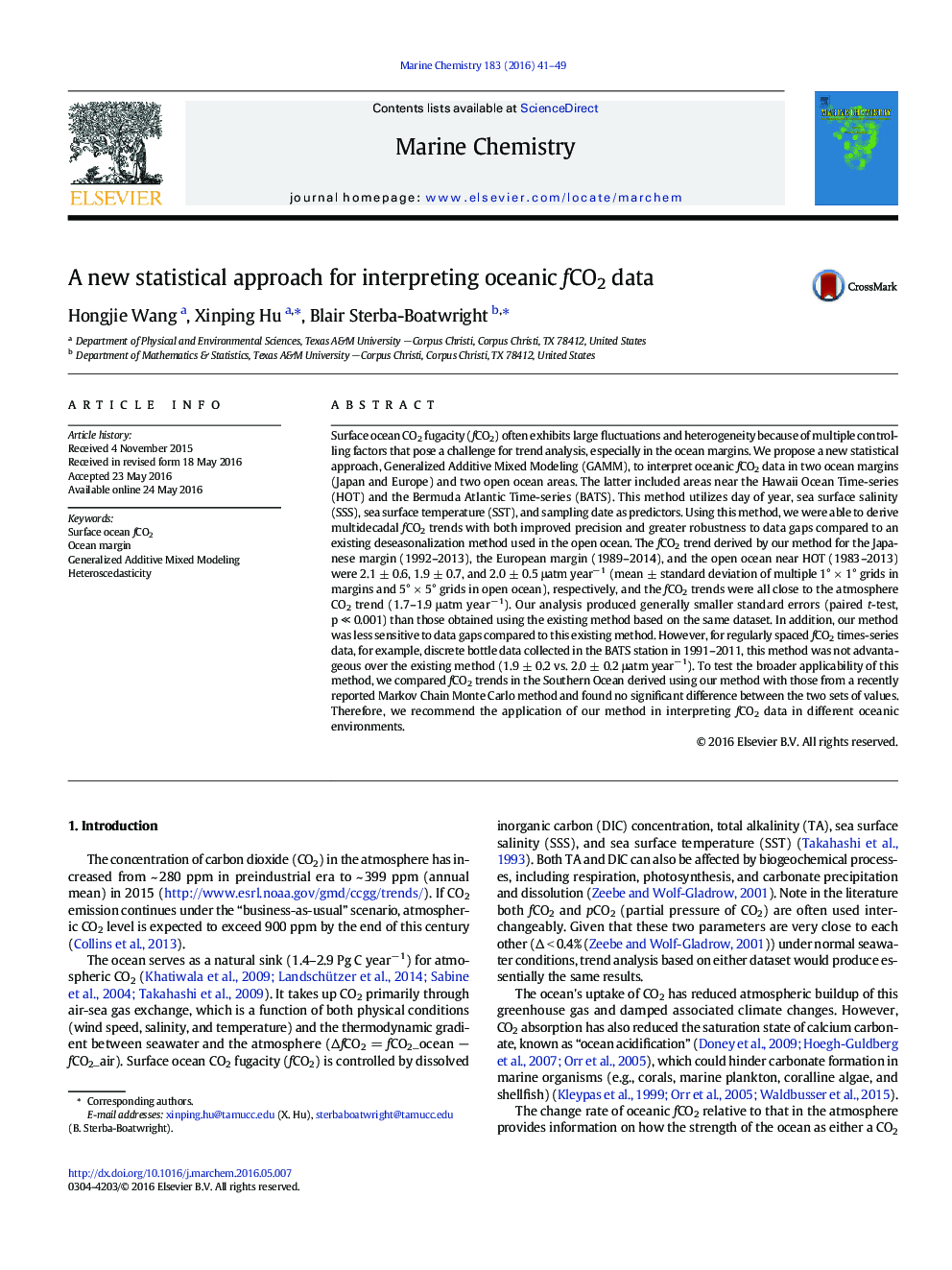| کد مقاله | کد نشریه | سال انتشار | مقاله انگلیسی | نسخه تمام متن |
|---|---|---|---|---|
| 1260904 | 1496653 | 2016 | 9 صفحه PDF | دانلود رایگان |
• Use Generalized Additive Mixed Modeling to interpret multidecadal oceanic fCO2 data
• Model results conformed with assumptions of homoscedasticity and normality.
• This approach was robust to data gaps and produced results with good precision.
Surface ocean CO2 fugacity (fCO2) often exhibits large fluctuations and heterogeneity because of multiple controlling factors that pose a challenge for trend analysis, especially in the ocean margins. We propose a new statistical approach, Generalized Additive Mixed Modeling (GAMM), to interpret oceanic fCO2 data in two ocean margins (Japan and Europe) and two open ocean areas. The latter included areas near the Hawaii Ocean Time-series (HOT) and the Bermuda Atlantic Time-series (BATS). This method utilizes day of year, sea surface salinity (SSS), sea surface temperature (SST), and sampling date as predictors. Using this method, we were able to derive multidecadal fCO2 trends with both improved precision and greater robustness to data gaps compared to an existing deseasonalization method used in the open ocean. The fCO2 trend derived by our method for the Japanese margin (1992–2013), the European margin (1989–2014), and the open ocean near HOT (1983–2013) were 2.1 ± 0.6, 1.9 ± 0.7, and 2.0 ± 0.5 μatm year− 1 (mean ± standard deviation of multiple 1° × 1° grids in margins and 5° × 5° grids in open ocean), respectively, and the fCO2 trends were all close to the atmosphere CO2 trend (1.7–1.9 μatm year− 1). Our analysis produced generally smaller standard errors (paired t-test, p ≪ 0.001) than those obtained using the existing method based on the same dataset. In addition, our method was less sensitive to data gaps compared to this existing method. However, for regularly spaced fCO2 times-series data, for example, discrete bottle data collected in the BATS station in 1991–2011, this method was not advantageous over the existing method (1.9 ± 0.2 vs. 2.0 ± 0.2 μatm year− 1). To test the broader applicability of this method, we compared fCO2 trends in the Southern Ocean derived using our method with those from a recently reported Markov Chain Monte Carlo method and found no significant difference between the two sets of values. Therefore, we recommend the application of our method in interpreting fCO2 data in different oceanic environments.
Journal: Marine Chemistry - Volume 183, 20 July 2016, Pages 41–49
